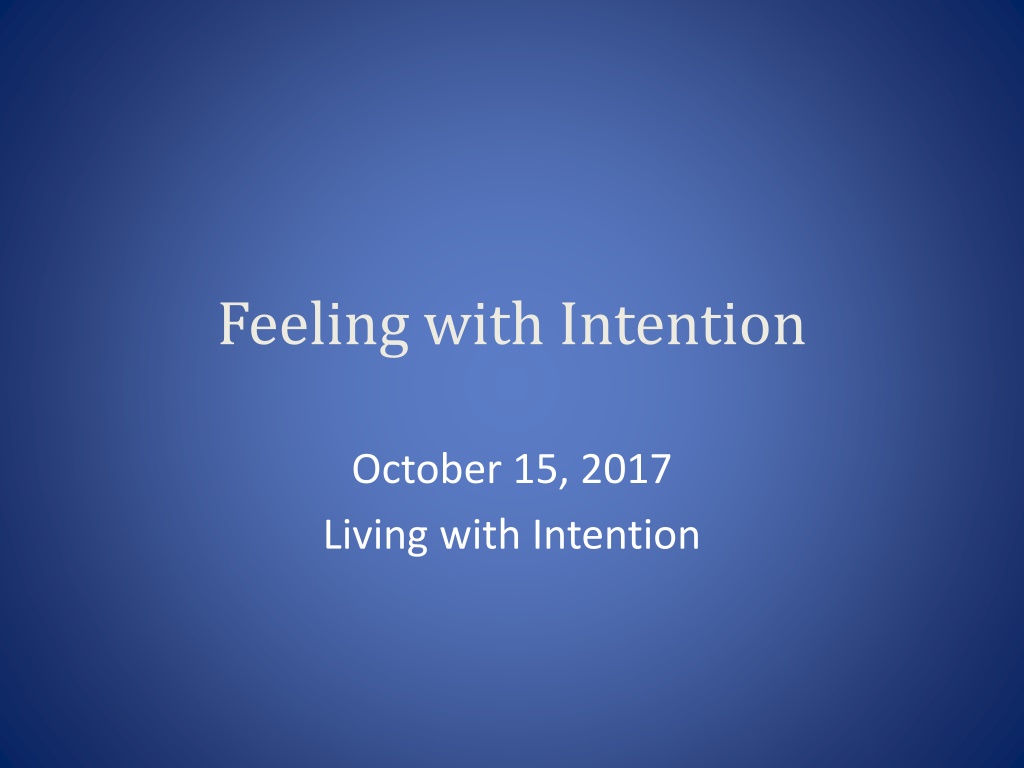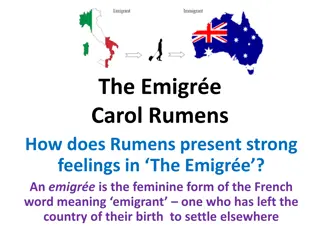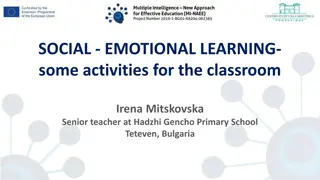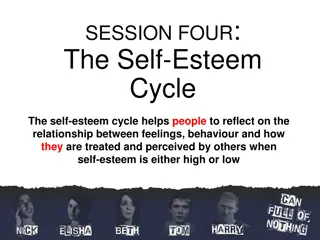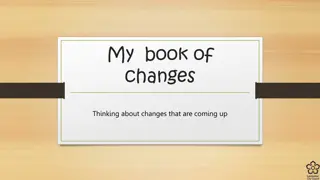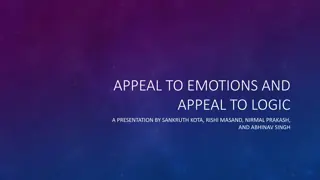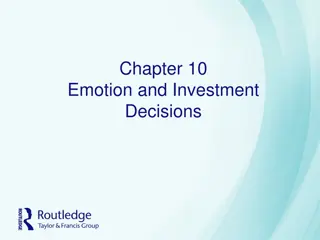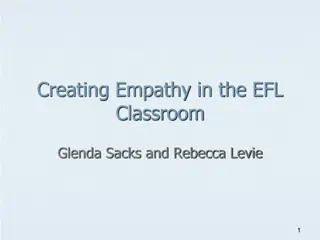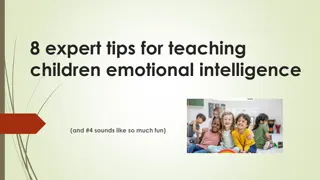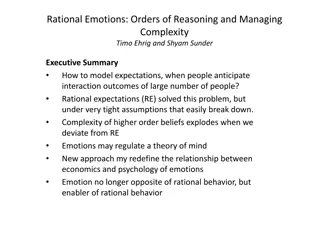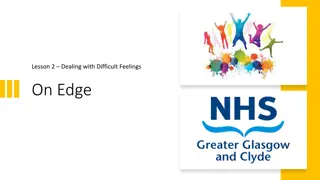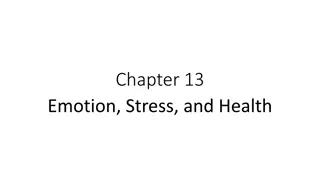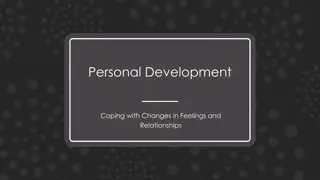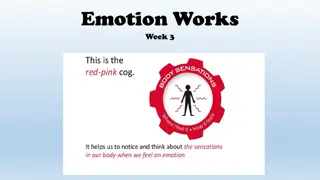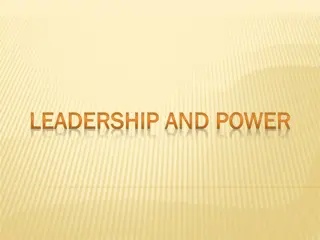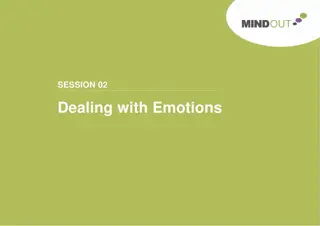Understanding the Power of Feelings and Emotions
Exploring the depth of interior experiences, distinctions between emotion and affect, aspects of awareness, perspectives, and the importance of acknowledging feelings. Dive into the realms of sensations, emotions, thoughts, and wishes while delving into the domains of consciousness. Learn about the five "bad" feelings and how they impact our lives.
Uploaded on Sep 22, 2024 | 0 Views
Download Presentation

Please find below an Image/Link to download the presentation.
The content on the website is provided AS IS for your information and personal use only. It may not be sold, licensed, or shared on other websites without obtaining consent from the author. Download presentation by click this link. If you encounter any issues during the download, it is possible that the publisher has removed the file from their server.
E N D
Presentation Transcript
Feeling with Intention October 15, 2017 Living with Intention
Interior Experience - Feelings What is powerfully immediate for you that no one else knows until you choose to act in a way that informs them? Those are your interior experiences. Are they real? Do they matter? Are they of value to you? Are they of value to others? Feelings are a source of both information and energy. They tell us what is going on and they give us the motivation to act. We don t choose what we feel so much as whether we feel. We can be aware or we can be numb.
Distinctions Emotion and Affect Emotionality and Rationality Reactive and Responsive
Aspects of awareness Focus of attention: what I look at Locus of Identity: where I look from Lens or map: what I look through
Perspectives When I focus my attention on a given object from a specific locus and look through a particular lens or with a particular map I am adopting a perspective.
Why we try not to feel our feelings We don t want to feel bad We think there is a choice to feel good or to feel bad. The choice is in how we will act and what we will pay attention to. Choosing not to pay attention to bad feelings: Doesn t make them go away. Doesn t mean we are not affected by them. Doesn t mean they don t affect our behavior.
Four basic types of feelings Sensation Emotion Thought Wish
Domains of Consciousness Sensations Emotions Intuition Thoughts Wishes Imagination
The Five Bad Feelings Hurt: the central bad feeling. I am not getting what I need. I am getting what I don t need. Fear: future tense hurt. This is going to hurt. Sadness: past tense hurt. It really hurt when my Grandpa died. Anger: the choice that the other makes hurts me. Guilt: the choice that I make hurts another.
FEAR ANGER HURT GUILT SADNESS
Three tasks for building emotional competence Naming: What is this feeling? What are all the feelings arising for me? How many aspects or dimensions of this experience can I name? Addressing: What is this feeling about? Where does this feeling come from? Is the feeling proportional to the event? Is it too big for what is happening or too small? Does it remind me of past events? What can I do with the energy of the feeling to transform my experience? Resolving: Can I learn from the data and harness the energy such that I can do something creative with this experience?
Trauma A circumstance in which we are stuck or torn and which we are not able to resolve when it arises Results in a burdened part that carries an emotional charge which gets triggered when events with a similar emotional frequency arise.
Do you want to know what you are feeling? Which feeling do you most not want to feel?
Bothers Me Log We are urged to not let things bother us We can t address a problem until we become aware of it. This discipline is about becoming aware of problems we already know how to solve but don t. The only true mistake is to not pay attention.
Bothers Me Log Spend five minutes every day writing down what is bothering you or has bothered you in the last 24 hours. Not a journal or a diary but a list As a pattern emerges you may want to create a check list. Has this bothered me in the last day?
Anger Workout Remember a time you made a choice you regret. What emotions were you having in the moments just before you made that choice? When you focus your attention now on the sensations and emotions you were having then, what happens?
Anger Workout Set aside at least five minutes every day to focus your attention on the sensations and emotions you least like having. Don t replay events. Don t make plans. Just feel your feelings. Be safe. Don t be with those who arouse these feelings or those who may be frightened by these feelings. Don t rehearse violence.
